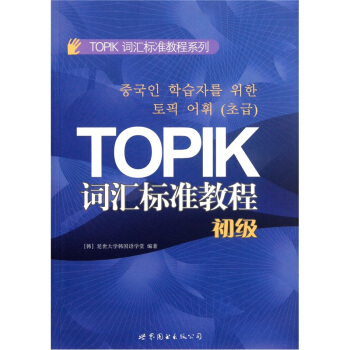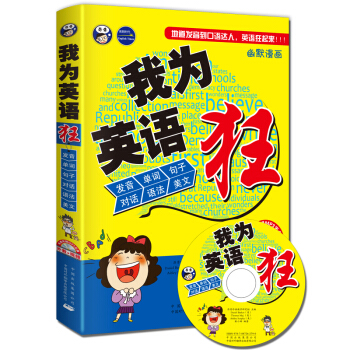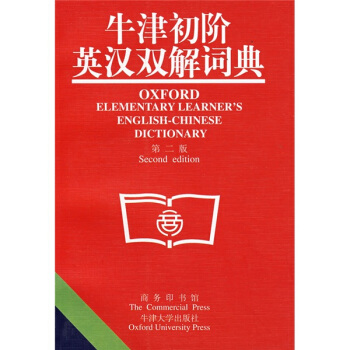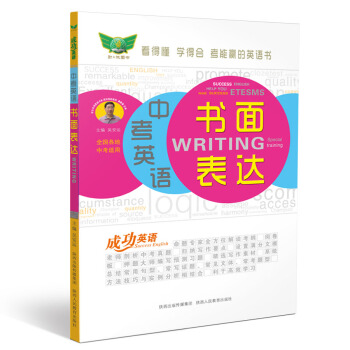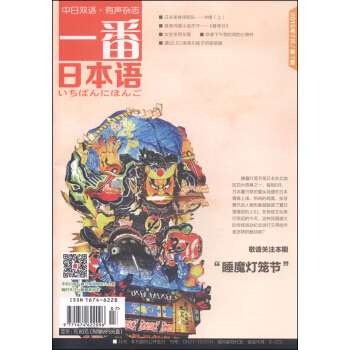![世界名著典藏系列:资本论(英文全本) [Capital]](https://pic.tinynews.org/10184741/rBEIC0_RuZcIAAAAAAC1F7zWlbgAAAfkAESX9sAALUv677.jpg)

具体描述
编辑推荐
世界文学名著表现了作者描述的特定时代的文化。阅读这些名著可以领略著者流畅的文笔、逼真的描述、详细的刻画,让读者如同置身当时的历史文化之中。为此,我们将这套精心编辑的“名著典藏”奉献给广大读者。
我们找来了专门研究西方历史、西方文化的专家学者,请教了专业的翻译人员,精心挑选了这些可以代表西方文学的著作,并听取了一些国外专门研究文学的朋友的建议,不删节、不做任何人为改动,严格按照原著的风格,提供原汁原味的西方名著,让读者能享受纯正的英文名著。
随着阅读的展开,你会发现自己的英语水平无形中有了大幅提高,并且对西方历史文化的了解也日益深入广阔。
送您一套经典,让您受益永远!
内容简介
1938年我国第一部中文全译本重新再版,马克思著作翻译家郭大力、王亚南翻译。在世界经济危机的严峻形势下,读《资本论》是一种时尚。众所周知,《资本论》是马克思倾其毕生心血写成的一部科学著作。它揭示了现代社会的经济运动规律,对于我们认识资本主义经济和研究社会主义经济提供了基本原理。
《世界名著典藏系列:资本论(英文全本)》为《资本论》的英文版,供广大读者阅读学习。
目录
PART 1 Commodities and Money
CHAPTER 1 Commodities
SECTION 1 The Two Factors of A Commodity: Use-Value And Value (The Substance of Value and The Magnitude of Value)
SECTION 2 The Twofold Character of the Labour Embodied in Commodities
SECTION 3 The Form of Value or Exchange Value
SECTION 4 The Fetishism of Commodities and the Secret Thereof
CHAPTER 2 Exchange
CHAPTER 3 Money, or the Circulation of Commodities
SECTION 1 The Measure Of Values
SECTION 2 The Medium Of Circulation
SECTION 3 Money
PART 2 The Transformation of Money into Capital
CHAPTER 4 The General Formula for Capital
CHAPTER 5 Contradictions in the General Formula of Capital
CHAPTER 6 The Buying and Selling of Labour-Power
PART 3 The Production of Absolute Surplus-Value
CHAPTER 7 The Labour-Process and the Process of Producing Surplus-Value
SECTION 1 The Labour-Process or the Production of Use-Values
SECTION 2 The Production of Surplus-Value
CHAPTER 8 Constant Capital and Variable Capital
CHAPTER 9 The Rate of Surplus-Value
SECTION 1 The Degree of Exploitation of Labour-Power
SECTION 2 The Representation of The Components of the Value of the Product by Corresponding Proportional Parts of the Product Itself
SECTION 3 Seniors "Last Hour"
SECTION 4 Surplus-Produce
CHAPTER 10 The Working-Day
SECTION 1 The Limits of the Working-Day
SECTION 2 The Greed for Surplus-Labour. Manufacturer and Boyard
SECTION 3 Branches of English Industry Without Legal Limits to Exploitation :
SECTION 4 Day and Night Work. The Relay System
SECTION 5 The Struggle for A Normal Working-Day. Compulsory Laws for the Extension of the Working-Day from the Middle of the 14th to the End of the 17th Century
SECTION 6 The Stru~ele for the Normal Working-Day. Comoulsorv
Limitation by Law of the Working-Time. The English Factory Acts, 1833 to 1864..
SECTION 7 The Struggle for the Normal Working-Day. Re-Action of the English Factory Acts on Other Countries
CHAPTER 11 Rate and Mass of Surplus Value
PART 4 Production of Relative Surplus Value
CHAPTER 12 The Concept of Relative Surplus Value
CHAPTER 13 Co-operation
CHAPTER 14 Division of Labour and Manufacture
SECTION 1 Two-Fold Origin of Manufacture
SECTION 2 The Detail Labourer and His Implements
SECTION 3 The Two Fundamental Forms of Manufacture: Heterogeneous Manufacture, Serial Manufacture
SECTION 4 Division of Labour in Manufacture, and Division of Labour in Society
SECTION 5 The Capitalistic Character of Manufacture..
CHAPTER 15 Machinery and Modem Industry
SECTION 1 The Development of Machinery
SECTION 2 The Value Transferred by Machinery to the Prodsuct
SECTION 3 The Proximate Effects of Machinery on the Workman
SECTION 4 The Factory
SECTION 5 The Strife Between Workman and Machine
SECTION 6 The Theory of Compensation as Regards the Workpeople Displaced by Machinery
SECTION 7 Repulsion and Attraction of Workpeople by the Factory System Crises in the Cotton Trade
SECTION 8 Revolution Effected in Manufacture, Handicrafts, and Domestic industry by Modem Industry
SECTION 9 The Factory Acts. Sanitary and Educational Clauses of the Same Their General Extension in England
SECTION 10 Modem Industry and Agriculture
PART 5 The Production of Absolute and of Relative Surplus-Value
CHAPTER 16 Absolute and Relative Surplus-Value
CHAPTER 17 Changes of Magnitude in the Price of Labour-Power and in Surplus Value
SECTION 1 Length of the Working-Day and Intensity of Labour Constant Productiveness of Labour Variable
SECTION 2 Working-Day Constant. Productiveness of Labour Constant Intensity of Labour Variable
SECTION 3 Productiveness and Intensity of Labour Constant. Length of the Working-Day Variable
SECTION 4 Simultaneous Variations in the Duration, Productiveness, and Intensity of Labour
CHAPTER 18 Various Formula for the Rate of Surplus-Value..
PART 6 Wages
CHAPTER 19 The Transformation of the Value (and Respective Price) of Labour-Power into Wages
CHAPTER 20 Time-Wages
CHAPTER 21 Piece-Wages
CHAPTER 22 National Differences of Wages
PART 7 The Accumulation of Capital
CHAPTER 23 Simple Reproduction
CHAPTER 24 Conversion of Surplus-Value into Capital
SECTION 1 Capitalist Production on A Progressively Increasing Scale Transition of the Laws of Property that Characterise Production of Commodities into Laws of Capitalist Appropriation
SECTION 2 Erroneous Conception, by Political Economy, of Reproduction on A Progressively Increasing Scale
SECTION 3 Separation of Surplus-Value into Capital and Revenue. The Abstinence Theory
SECTION 4 Circumstances that, Independently of the Proportional Division of Surplus-Value into Capital and Revenue, Determine the Amount of Accumulation. Degree of Exploitation of Labour-Power. Productivity of Labour. Growing Difference in Amount Between Capital Employed and Capital Consumed. Magnitude of Capital Advanced SECTION 5 The So-called Labour-Fund
CHAPTER 25 The General Law of Capitalist Accumulation
SECTION 1 The Increased Demand for Labour-Power that Accompanies Accumulation, the Composition of Capital Remainnng the Same
SECTION 2 Relative Diminution of the Variable Part of Capital Simultaneously with the Progress of Accumulation and of the Concentration that Accompanies it
SECTION 3 Progressive Production of a Relative Surplus-Population or Industrial Reserve Army
SECTION 4 Different Forms of the Relative Surplus-Population. The General Law of Capitalistic Accumulation
SECTION 5 Illustrations of the General Law of Capitalist Accumulation
PART 8 Primitive Accumulation
CHAPTER 26 The Secret of Primitive Accumulation
CHAPTER 27 Expropriation of the Agricultural Population from the Land.
CHAPTER 28 Bloody Legislation Against the Expropriated, from the End of the 15th Century. Forcing Down of Wages by Acts of Parliament
CHAPTER 29 Genesis of the Capitalist Farmer
CHAPTER 30 Reaction of the Agricultural Revolution on Industry. Creation of the Home-Market for Industrial Capital..
CHAPTER 31 Genesis of the Industrial Capitalist
CHAPTER 32 Historical Tendency of Capitalist Accumulation
CHAPTER 33 The Modem Theory of Colonisation
精彩书摘
Commodities come into the world in the shape of use values, articles, or goods,such as iron, linen, corn, &c.; This is their plain, homely, bodily form. They are,however, commodities, only because they are something twofold, both objects ofutility, and, at the same time, depositories of value. They manifest themselvestherefore as commodities, or have the form of commodities, only in so far as theyhave two forms, a physical or natural form, and a value form.
The reality of the value of commodities differs in this respect from DameQuickly, that we dont know "where to have it." The value of commodities is thevery opposite of the coarse materiality of their substance, not an atom of matterenters into its composition. Turn and examine a single commodity, by itself, as wewill, yet in so far as it remains an object of value, it seems impossible to grasp it. If,however, we bear in mind that the value of commodities has a purely social reality,and that they acquire this reality only in so far as they are expressions orembodiments of one identical social substance, viz, human labour, it follows as amatter of course, that value can only manifest itself in the social relation ofcommodity to commodity. In fact we started from exchange value, or the exchangerelation of commodities, in order to get at the value that lies hidden behind it. Wemust now return to this form under which value first appeared to us.
Every one knOWS, if he knows nothing else, that commodities have a value formcommon to them all, and presenting a marked contrast with the varied bodily formsof their use values. I mean their money form. Here, however, a task is set us, theperformance of which has never yet even been attempted by bourgeois economy,the task of tracing the genesis of this money form, of developing the expression ofvalue implied in the value relation of commodities, from its implest,almostimperceptible outline, to the dazzling money form. By doing this we shall, at thesame time, solve the riddle presented by money. The simplest value relation is evidently that of one commodity to some one othercommodity of a different kind. Hence the relation between the values of twocommodities supplies us with the simplest expression of the value of a singlecommodity.
……
前言/序言
用户评价
说实话,我购买这套“世界名著典藏系列”很大程度上是出于一种对知识体系的敬畏感。在这个信息碎片化爆炸的时代,能够静下心来阅读一部体系完整、影响深远的原著,本身就是一种对抗浮躁的姿态。我个人对历史和经济思想史一直抱有浓厚的兴趣,而这本被誉为现代经济学和政治学基石的著作,无疑是绕不开的一座丰碑。我更关注的不是书里具体的公式推导,而是其背后的哲学基础和对当时社会结构的深刻批判。我希望通过阅读原著,能更清晰地理解那些经典术语是如何被构建出来的,它们是如何渗透到后世所有的社会科学讨论中的。这是一种对源头的追溯,就好比去探寻一条伟大河流的起点,虽然过程可能崎岖坎坷,但最终的收获将是无可估量的思想源泉。这不仅仅是知识的积累,更像是一种思维方式的重塑过程。
评分这本书的包装和装帧设计简直太棒了,拿在手里沉甸甸的,那种厚实的纸张和精美的封面设计,让人立刻就能感受到它作为“世界名著典藏系列”的一份子所应有的分量。我特地选了英文原版,就是想感受一下原汁原味的思想冲击力。尽管我还没来得及开始啃这本书,但光是翻阅目录和前言,就已经能体会到编辑团队在文本校对和版本选择上的用心。这不仅仅是一本书,更像是一件可以收藏的艺术品。内页的字体选择也恰到好处,排版疏朗有致,即使是面对这样一部据说艰深晦涩的巨著,也能稍微减轻一些阅读上的心理压力。我期望这次阅读能是一次对经典文本的深度朝圣,而不是简单地完成一个阅读任务。那种翻开书页时,墨香混合着纸张的微涩感,是电子阅读永远无法替代的体验,它宣告着你即将踏入一个宏大而复杂的思想世界。我打算找一个阳光明媚的下午,泡上一壶浓茶,正式开启这段对人类思想史的探索之旅。
评分我非常好奇不同版本的翻译策略——当然,这次我选择的是英文原版,但过去阅读其他名著时,我对译者是如何处理那些特定历史语境下的德语(或原文)词汇一直很感兴趣。对于这本巨著来说,每一个关键概念的精确度都至关重要。英文原版的好处在于,我可以直面作者的原始措辞,避免了任何可能出现的二次诠释偏差。我打算先浏览一下书中对于“价值”、“剩余价值”、“异化”等核心概念的早期表述,建立起自己的第一印象。这就像是去听一场交响乐的独奏,你渴望听到的是作曲家最初写下的那个音符,而不是任何改编者的演绎。我深知阅读的难度所在,它需要极高的专注度和对时代背景的初步了解,所以我的计划是会采取“精读+查阅工具书”的策略,确保每一个关键段落都能被真正消化,而不是囫囵吞枣地翻过去。
评分从实用的角度来看,这套典藏版的定价虽然不低,但考虑到其收藏价值和所涵盖的内容深度,我认为是物有所值的。在这个数字版权泛滥的年代,拥有一本实体书的意义已经超越了单纯的阅读工具属性,它承载着一种对知识的庄重对待。我特别喜欢那种厚重的纸张带来的沙沙声,那是一种触觉上的回馈,提醒着我正在处理的是重量级的思想遗产。我甚至想在书页的空白处做一些无关紧要的批注,虽然不打算在原版上动笔,但也许会准备一个笔记本,记录下那些令我感到醍醐灌顶的瞬间。这本书的意义可能并不在于读完它能让你立刻成为经济学家,而在于它提供了一种全新的、结构化的视角去审视我们赖以生存的社会和经济体系,那份对既有秩序的穿透性洞察力,才是最吸引我的地方。
评分我一直认为,衡量一个人思想深度的标准之一,就是他是否曾试图去理解那些挑战主流认知、但又被历史反复验证过的伟大理论。这本著作无疑是其中的佼佼者。我购买它的动机并非赶时髦,而是源于一种对自我认知的拓展需求。我希望通过这部作品,能够更透彻地理解现代资本主义运行的底层逻辑,认识到那些我们习以为常的经济现象背后的历史必然性和偶然性。我预见到,在阅读过程中,我可能会与书中的论点产生激烈的思想交锋,这正是我所期待的——真正的阅读从来不是单向的接受,而是双向的、充满张力的对话。能够与一位两百年前的伟大思想家进行如此长时间、如此深层次的“辩论”,本身就是一种无上的智力享受。
评分学宏微观经济学必看的书 中文英文都买了,对照着看
评分伟人巨作,莎翁的所有作品全集,难得,值得收藏!
评分物流很满意。书没有塑封,而且有点脏。书内封有点小破损还有书撞褶皱了。。虽然买了换货险,鉴于库存仅存一本和用200-100的券买的,就不换了。
评分京东的促销都是先涨价,然后再让你抢卷去买去。京东的促销都是先涨价,然后再让你抢卷去买去。京东的促销都是先涨价,然后再让你抢卷去买去。京东的促销都是先涨价,然后再让你抢卷去买去。书还是好书。京东的促销都是先涨价,然后再让你抢卷去买去。京东的促销都是先涨价,然后再让你抢卷去买去。京东的促销都是先涨价,然后再让你抢卷去买去。京东的促销都是先涨价,然后再让你抢卷去买去。书还是好书。
评分手头有翻译版,这次特意买来英文版再看一遍,上海世界图书出版,必属性价比精品
评分此用户未填写评价内容
评分有点小难度,故事还是很有趣的。一环套一环的故事看得人头晕,有点像山上有座庙,庙里有个和尚。
评分书越来越贵了,且买且珍惜。
评分正品,很不错,京东难得用纸盒子装了一次书。就是里面内容太密集了。
相关图书
本站所有内容均为互联网搜索引擎提供的公开搜索信息,本站不存储任何数据与内容,任何内容与数据均与本站无关,如有需要请联系相关搜索引擎包括但不限于百度,google,bing,sogou 等
© 2025 book.idnshop.cc All Rights Reserved. 静思书屋 版权所有


![牛津现代英汉双解大词典(第12版) [Concise Oxford English-Chinese Dictionary] pdf epub mobi 电子书 下载](https://pic.tinynews.org/11239241/rBEQYFGd9nsIAAAAAADgkHKiCxEAAB3CQLvfXkAAOCo690.jpg)

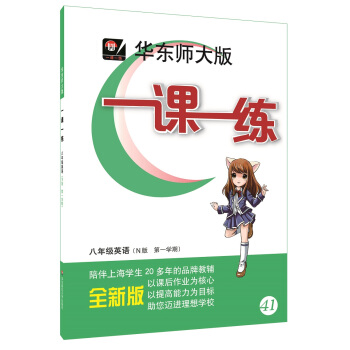


![世界名著典藏系列:瓦尔登湖(英文全本) [Walden] pdf epub mobi 电子书 下载](https://pic.tinynews.org/10096554/rBEIC0_RuEMIAAAAAADEx6x_XckAAAfiwGv980AAMTf102.jpg)
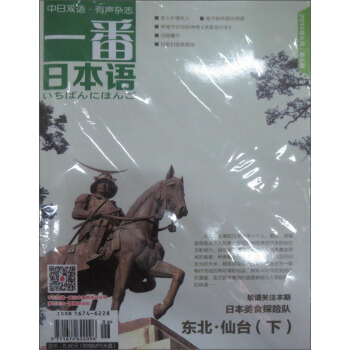
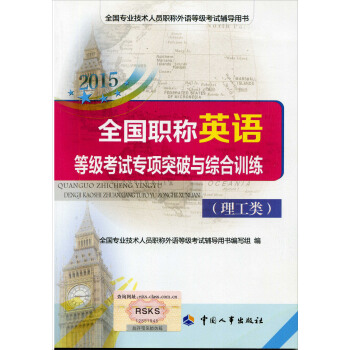

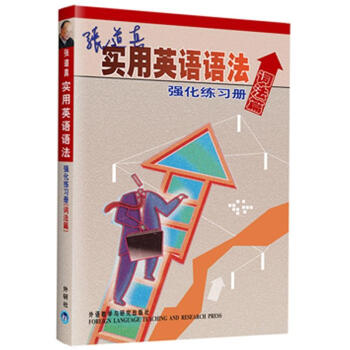
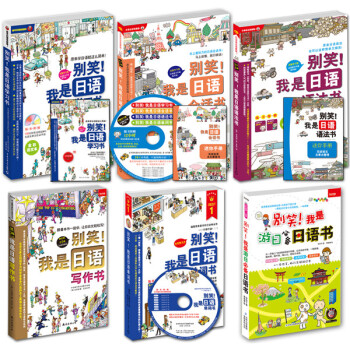
![全新英语阅读:阅读理解(高考) [English Reading Comprehension Series] pdf epub mobi 电子书 下载](https://pic.tinynews.org/11912696/5714987cN25ea4764.jpg)

